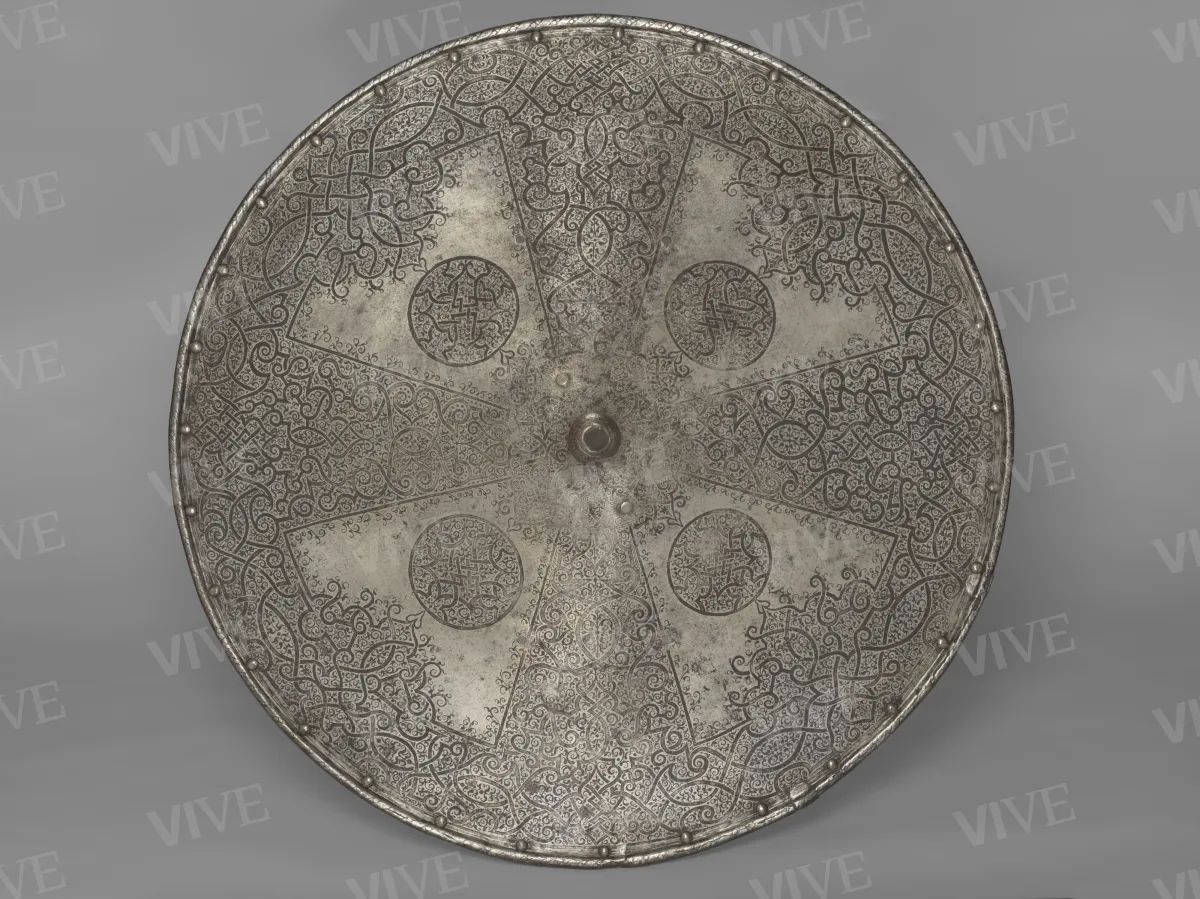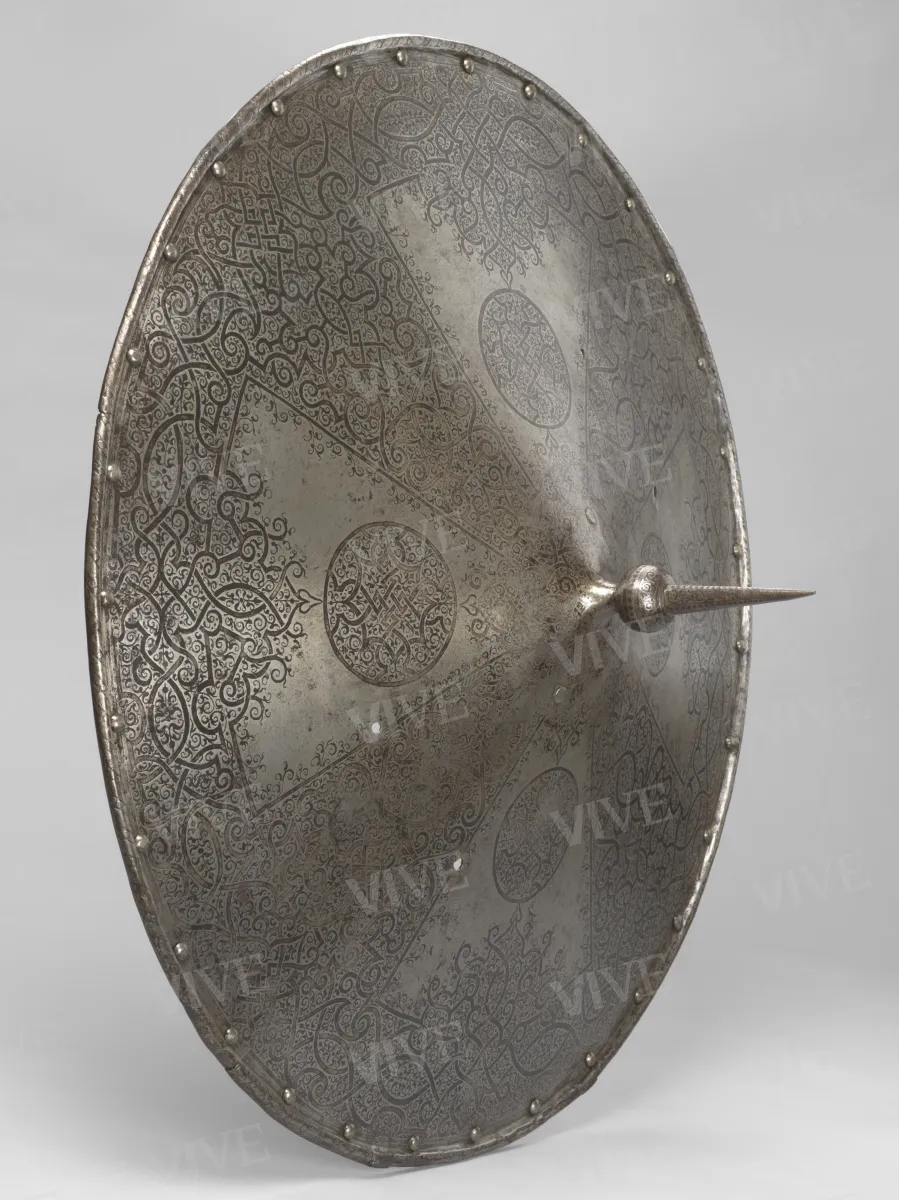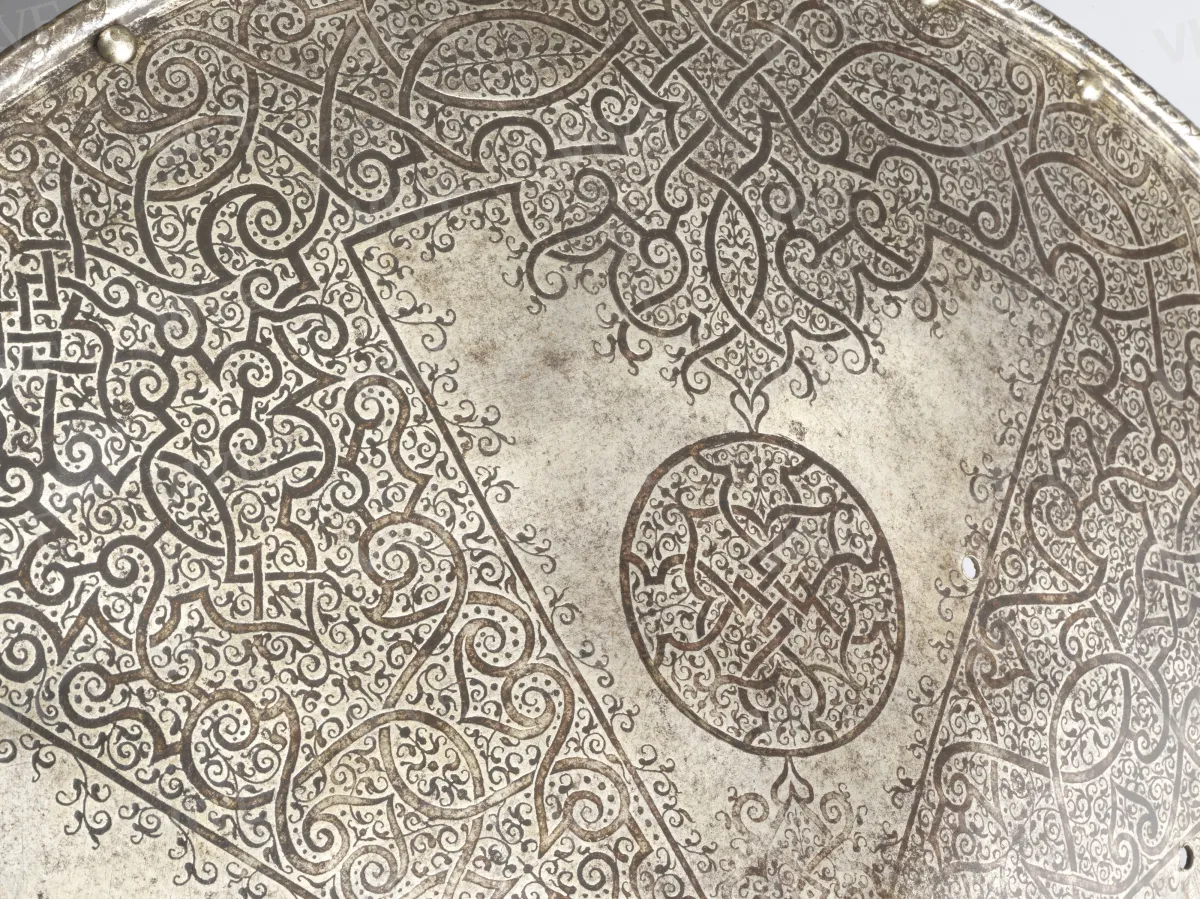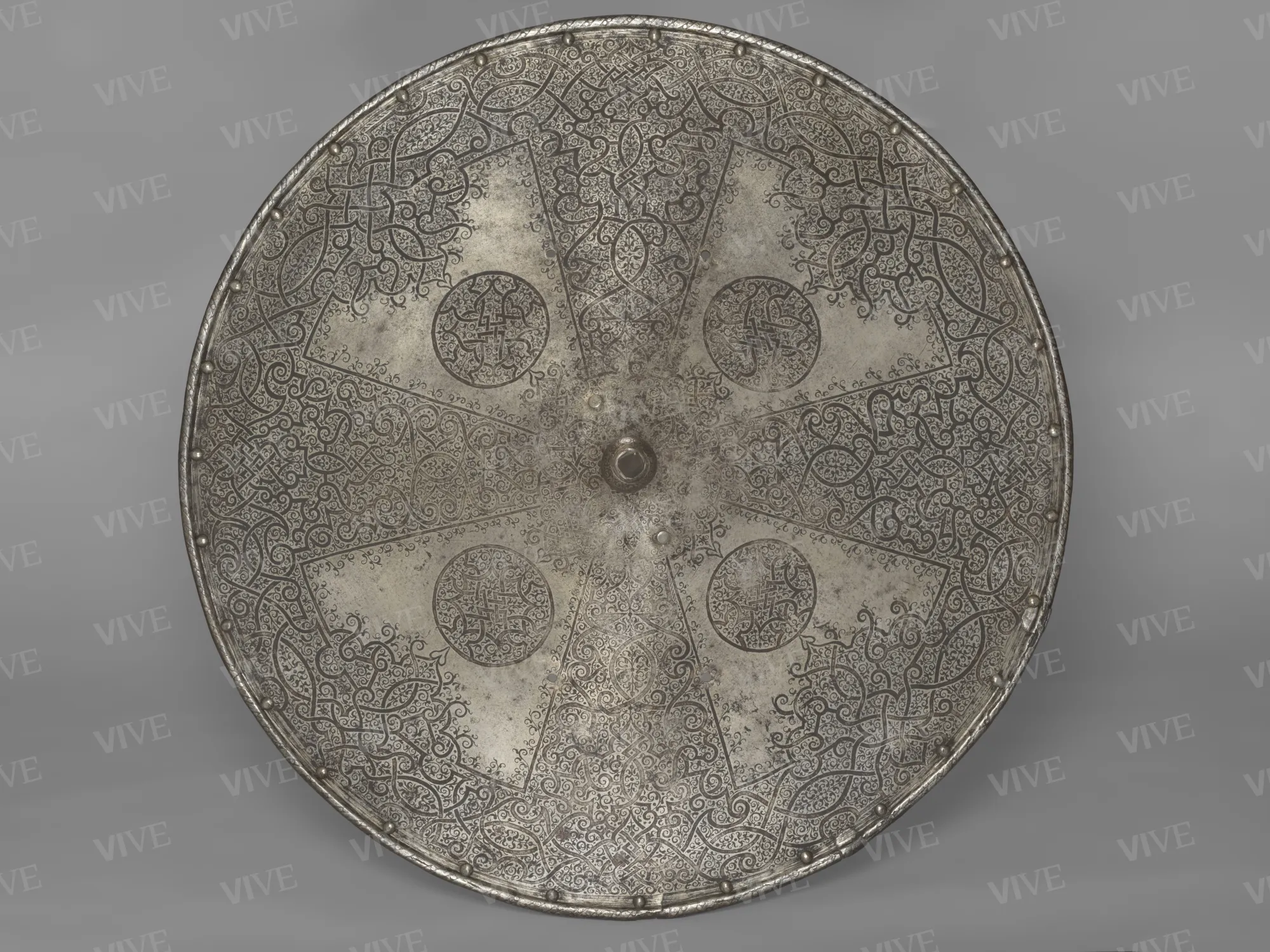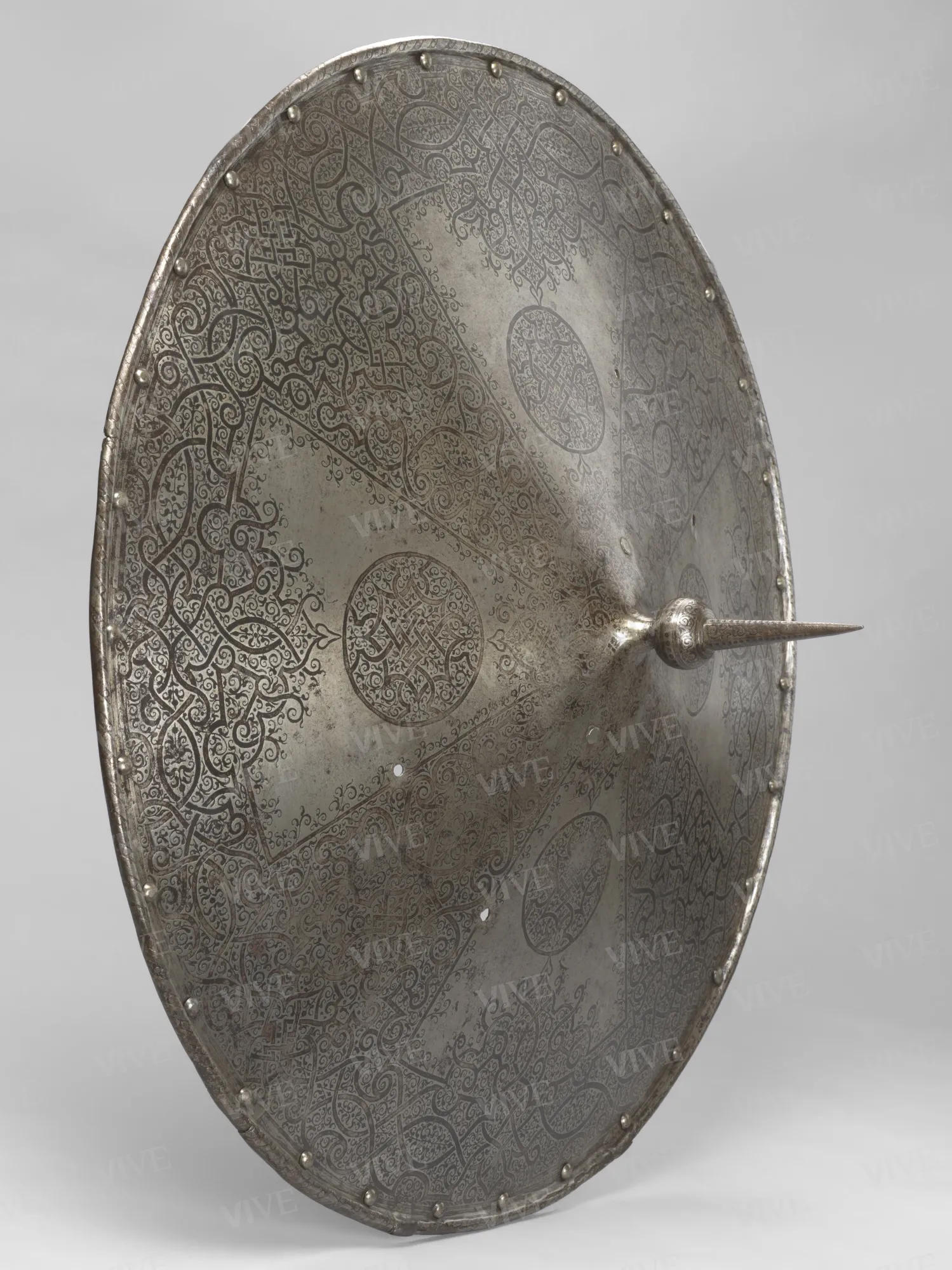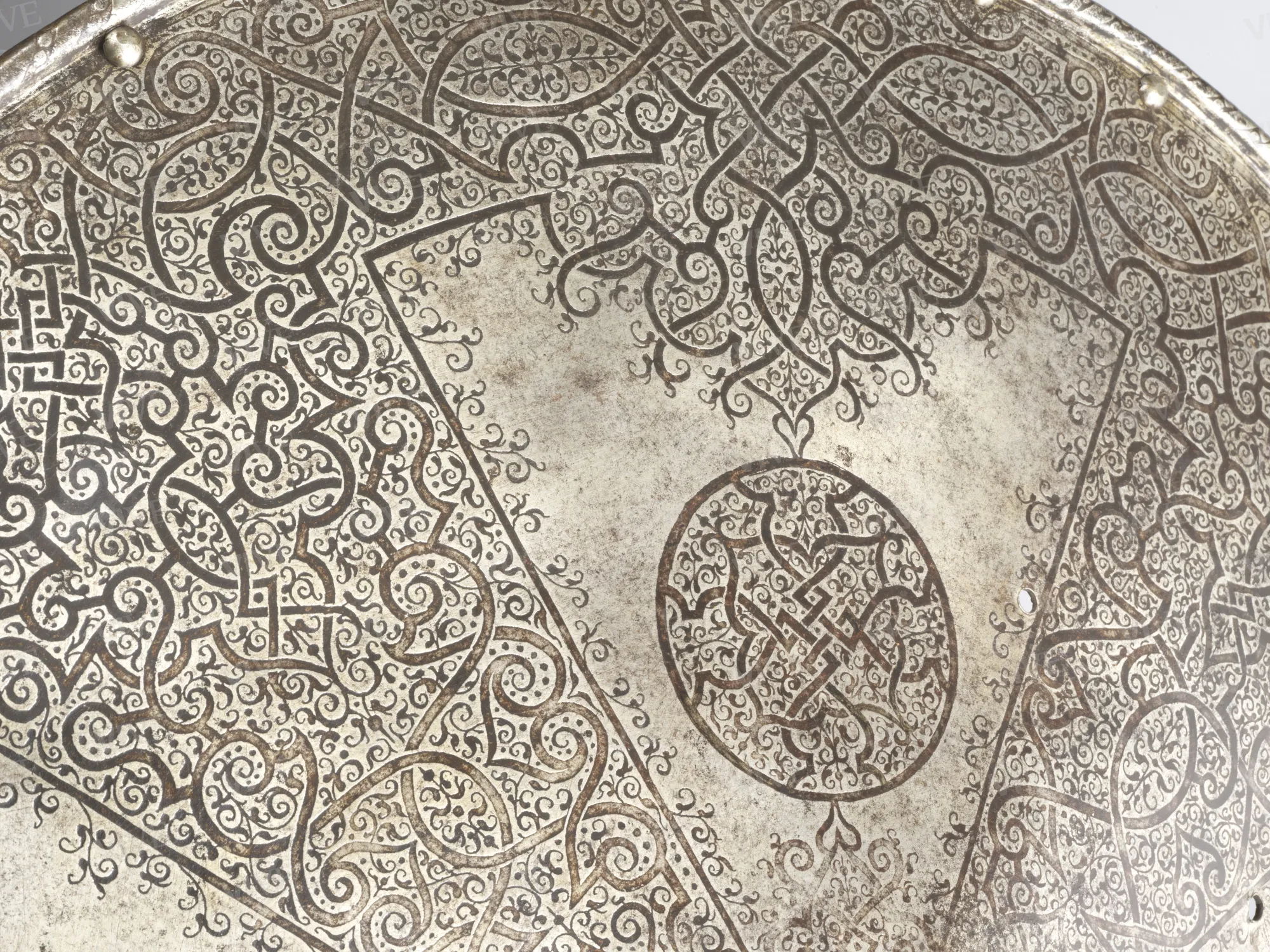Brocchiere
Northern German production C. 1560
The round brocchiere shield features a central spike. Its edge is elevated and adorned with a cord engraving, flanked by a series of round-headed steel rivets. The surface is intricately decorated with etched geometric motifs in the Moresque style, arranged in a band along the edge and segmented into four radiating sections. The blank spaces are further embellished with four circles engraved in the center, mirroring the motif described above. Additionally, four small holes are present, which originally held the rivets securing the harness.
The round brocchiere shield features a central spike. Its edge is elevated and adorned with a cord engraving, flanked by a series of round-headed steel rivets. The surface is intricately decorated with etched geometric motifs in the Moresque style, arranged in a band along the edge and segmented into four radiating sections. The blank spaces are further embellished with four circles engraved in the center, mirroring the motif described above. Additionally, four small holes are present, which originally held the rivets securing the harness.
Details of work
Catalog entry
This type of large round steel shield was commonly utilized in various martial exercises and was one of the most prevalent components within extensive weapon collections. The use of the shield as a protective element in combat diminished with the advent of steel plate armor at the end of the fourteenth century. Subsequently, warriors were entirely enclosed in a steel shell that allowed them to move safely while keeping both hands free. Nevertheless, the shield continued to be widely employed in various martial exercises, both on foot and mounted. The term “brocchiere” derives from the central cusp, referred to as a “brocco,” which characterizes this type of artifact. The intertwined ribbon decoration became popular in Germany around 1560, influenced by the Moresque style prominent during that period. Di Carpegna (1969, 33) suggests notable stylistic parallels between this brocchiere and two small rotellas for forearm protection from the Meyrick Collection, as well as a hip guard in the Kienbusch Collection. Scalini (2018, 108) notes similarities between the decorations on the brocchiere and those on the armor commissioned by Ferdinand I of Habsburg, who in 1558 ordered numerous suits of armor from the leading armorers of the time.
Riccardo Franci
Entry published on 12 June 2025
State of conservation
Good. Surface abrasion has damaged the engravings, especially near the central hilt. Cracks and steel flaking are visible on the outer edge.
Provenance
Collezione Odescalchi;
Rome, Museo Nazionale di Palazzo Venezia, June 30, 1959.
Exhibition history
Rome, Museo Nazionale di Palazzo Venezia, Antiche armi dal sec. IX al XVIII. Già Collezione Odescalchi, May–July 1969;
Rome, Museo Nazionale di Palazzo Venezia, Belle e terribili. La collezione Odescalchi, December 18, 2002–March 23, 2003;
Rome, Museo Nazionale di Castel Sant’Angelo; Roma, Museo Nazionale di Palazzo Venezia, Armi e potere nell’Europa del Rinascimento, July 26–November 11, 2018.
References
di Carpegna Nolfo (a cura di), Antiche armi dal sec. IX al XVIII. Già Collezione Odescalchi, catalogo della mostra (Roma, Museo Nazionale di Palazzo Venezia, maggio-luglio 1969), con schede a cura del curatore, Roma 1969, n. 182;
di Carpegna Nolfo, Le armi Odescalchi, Roma 1976, p. 33;
Barberini Maria Giulia (a cura di), Belle e terribili. La collezione Odescalchi. Armi bianche e da fuoco, catalogo della mostra (Roma, Museo Nazionale di Palazzo Venezia, 18 dicembre 2002-23 marzo 2003), Roma 2002, p. 65;
Scalini, in Scalini Mario (a cura di), Armi e potere nell’Europa del Rinascimento, catalogo della mostra (Roma, Museo Nazionale di Castel Sant’Angelo; Roma, Museo Nazionale di Palazzo Venezia, 26 luglio-11 novembre 2018), Cinisello Balsamo 2018, p. 108, n. III.9.

